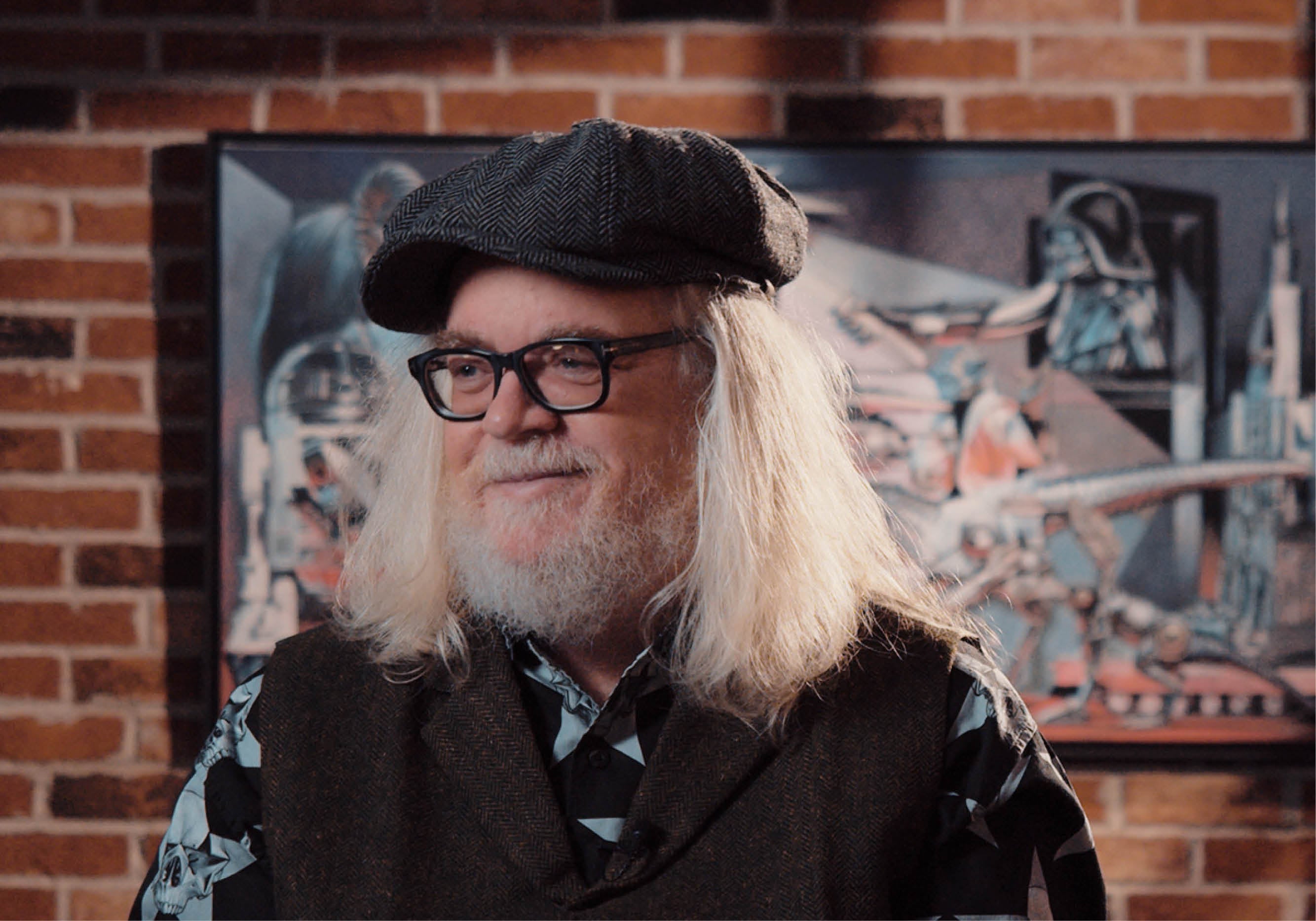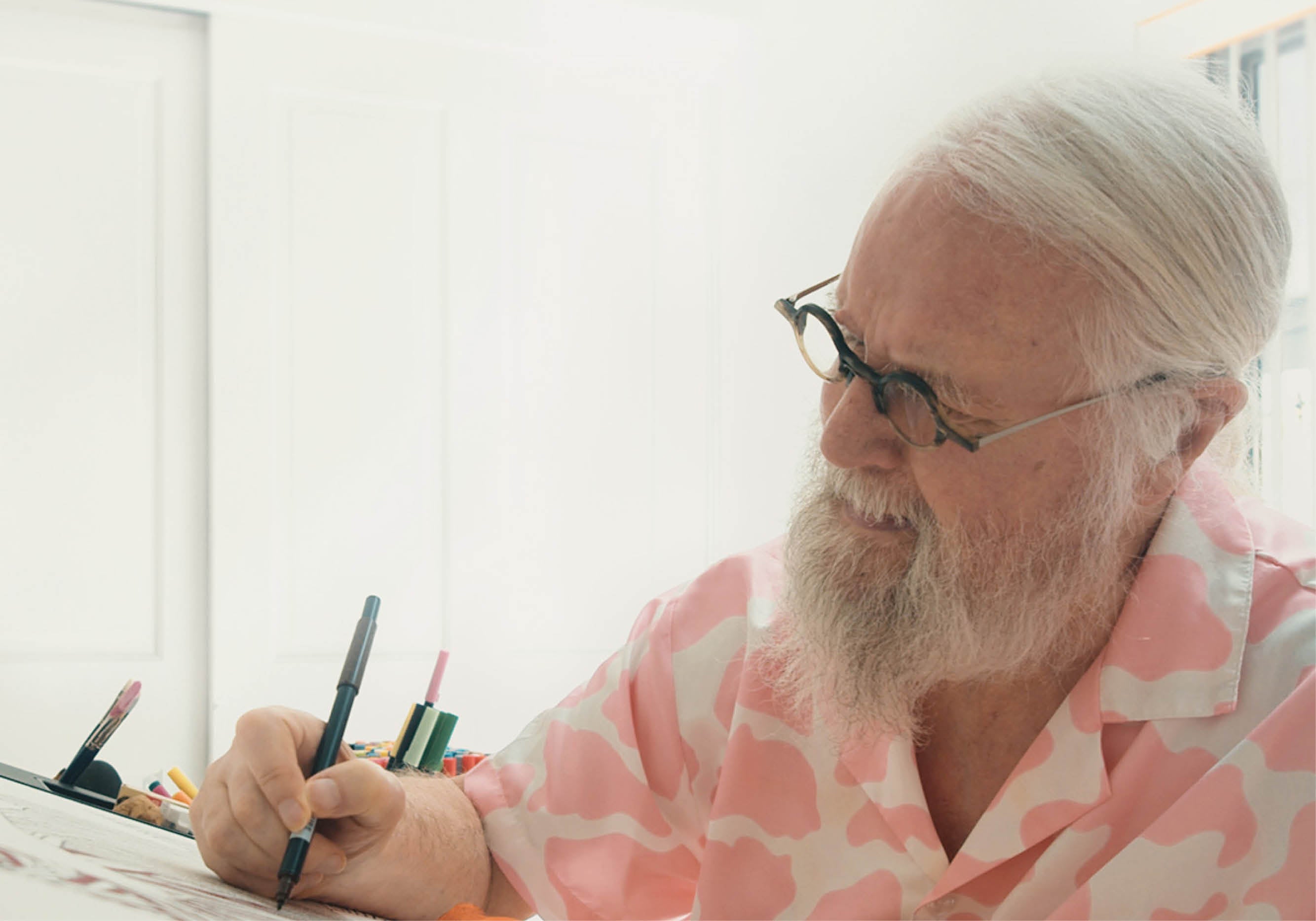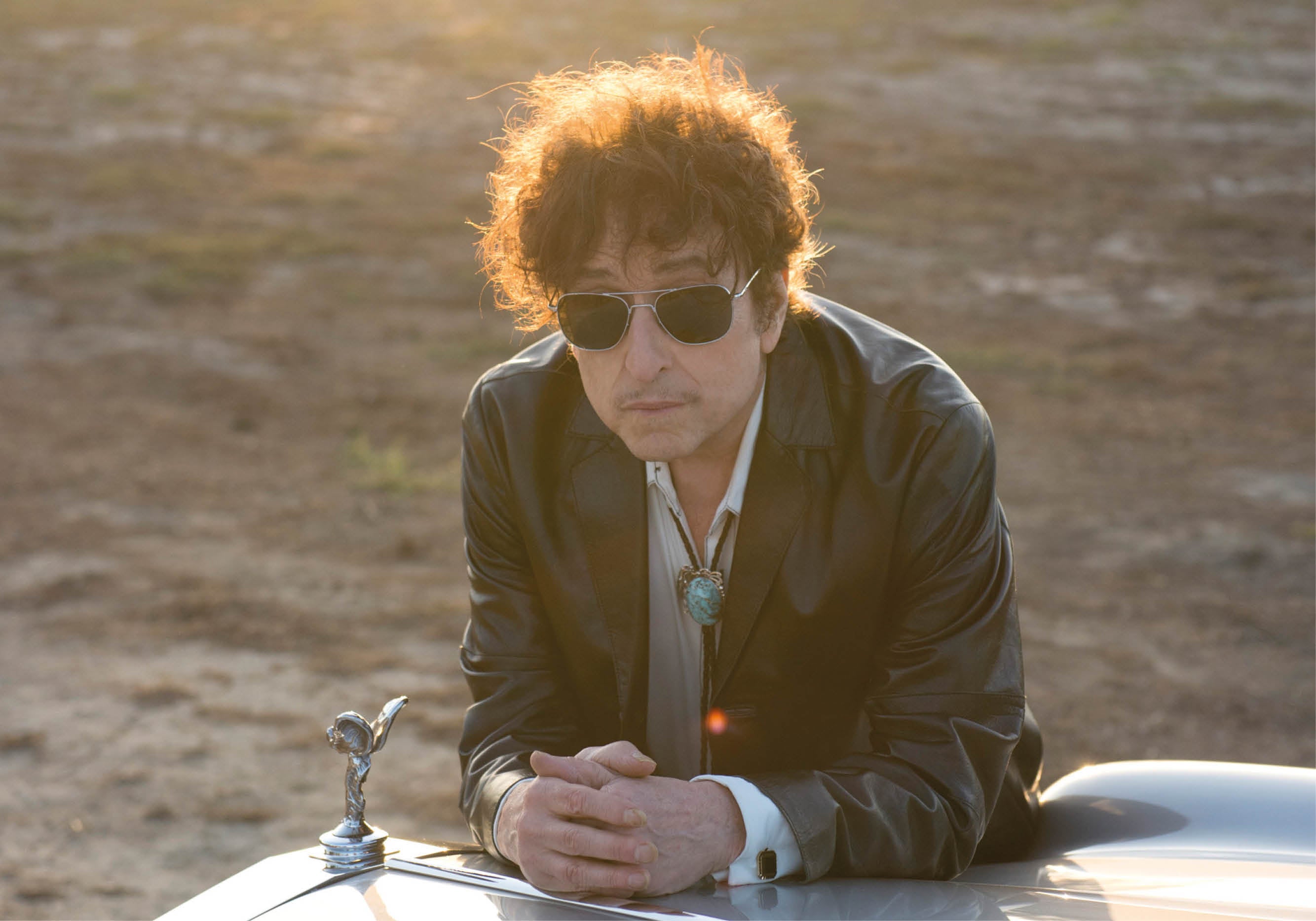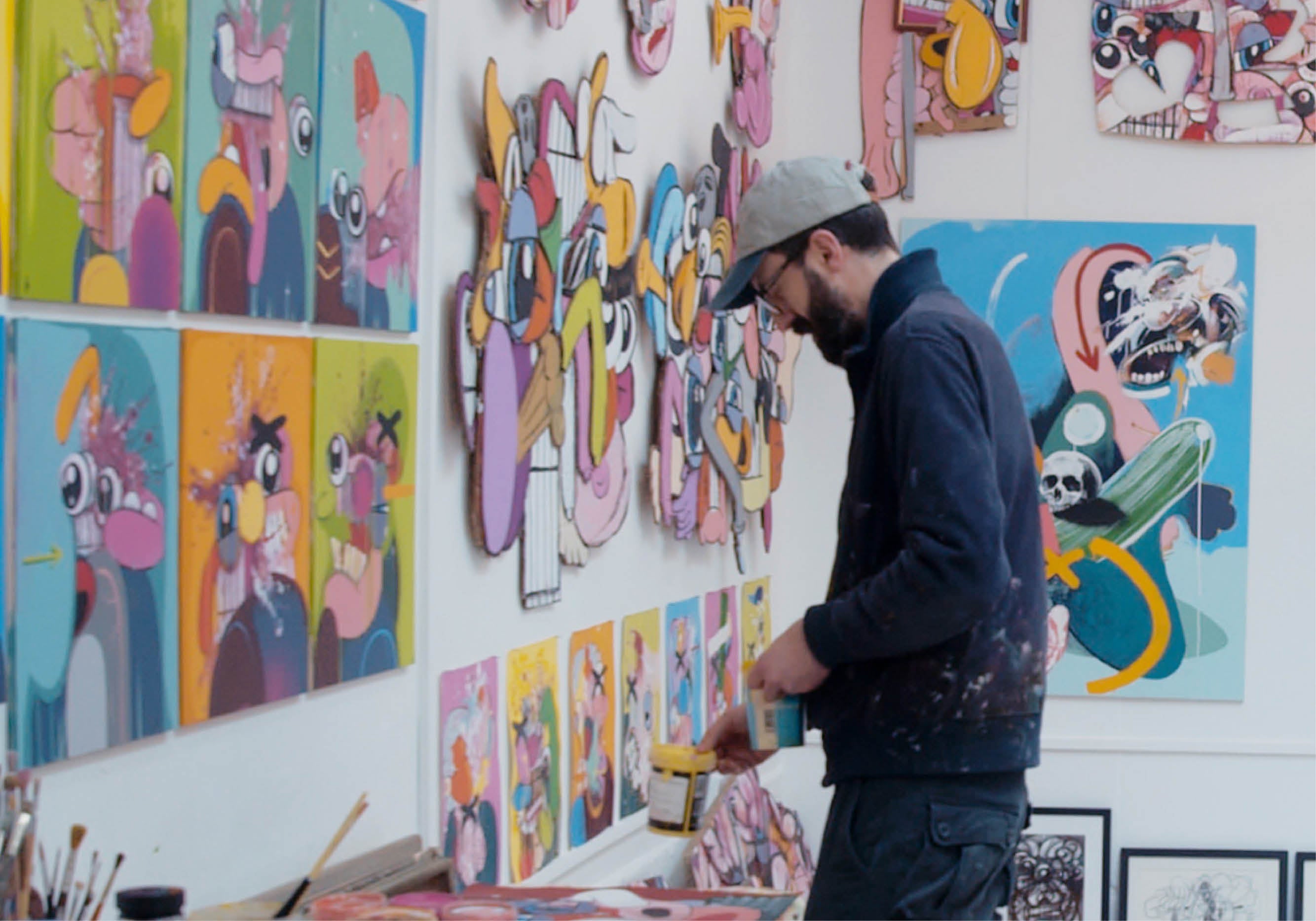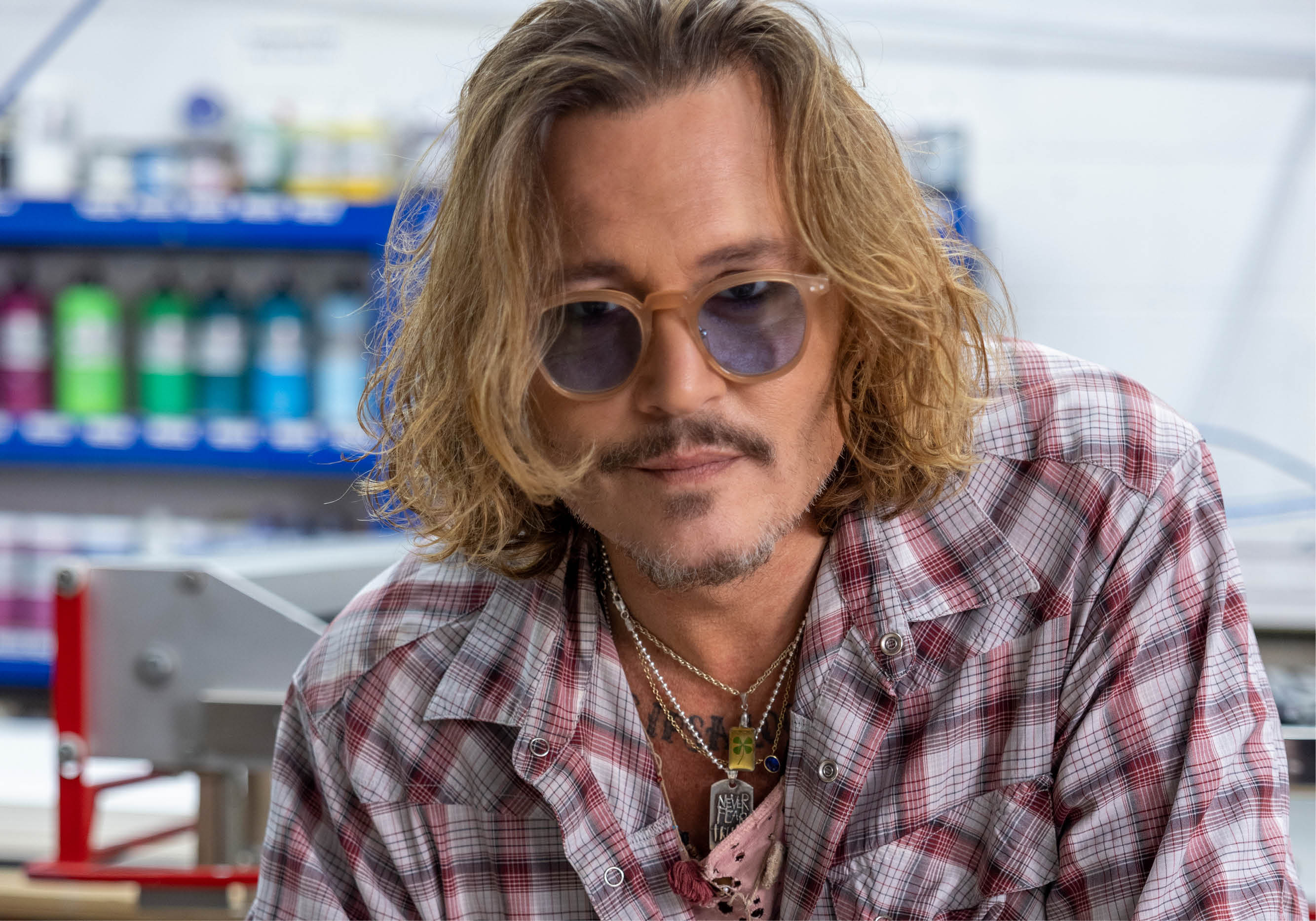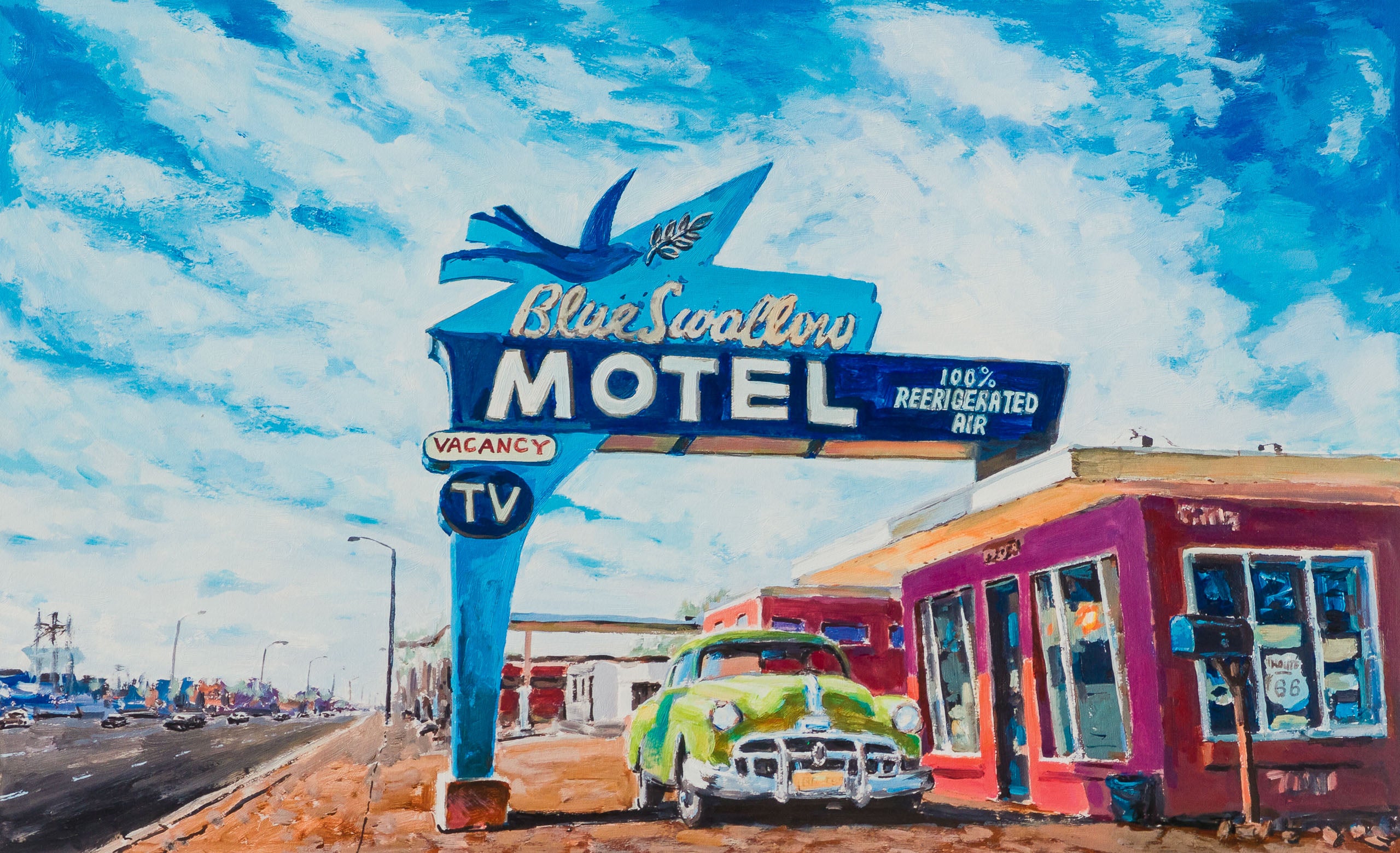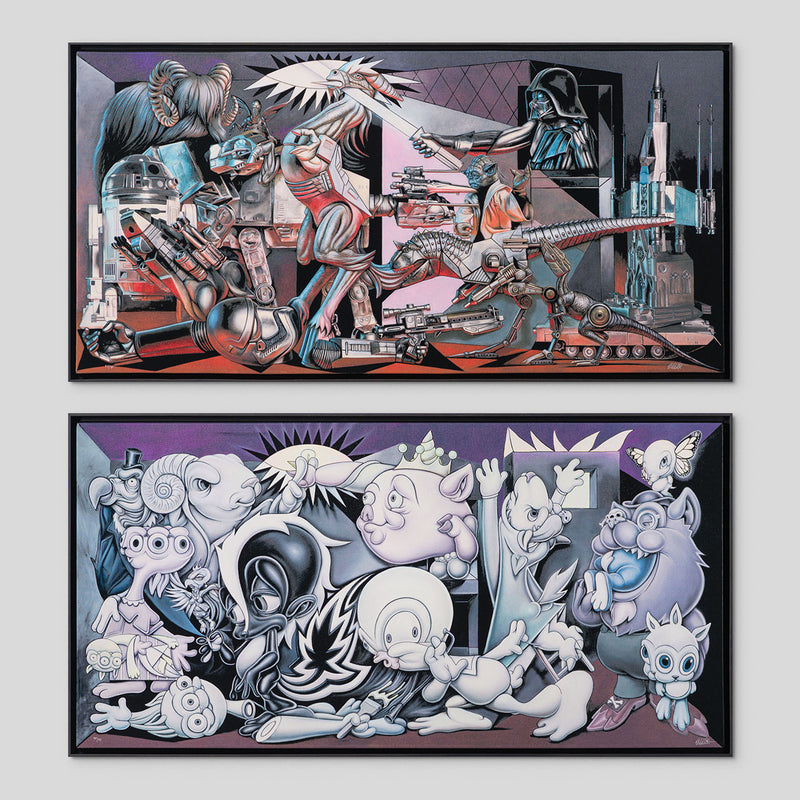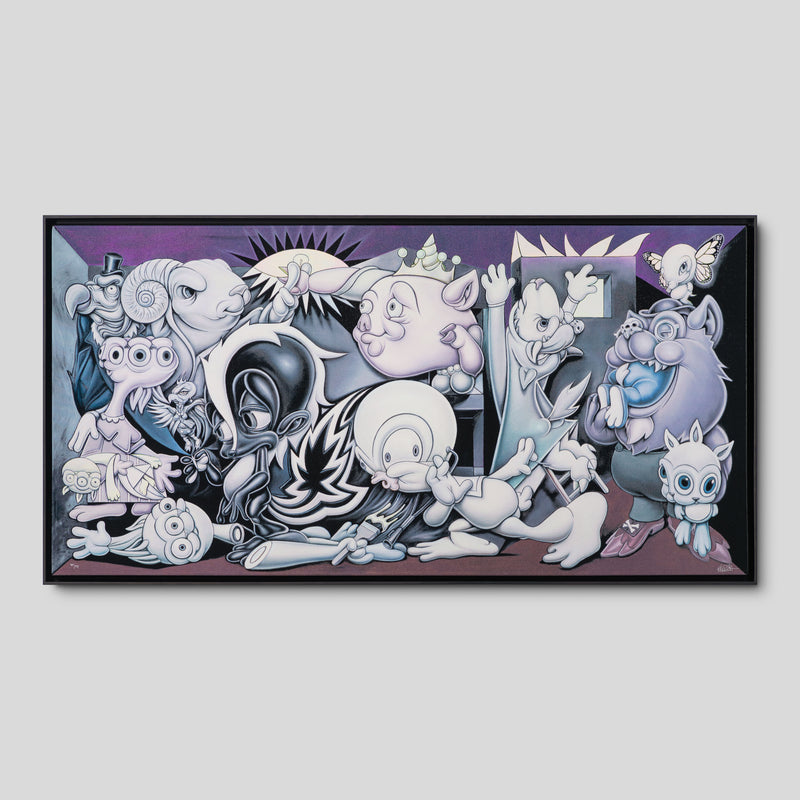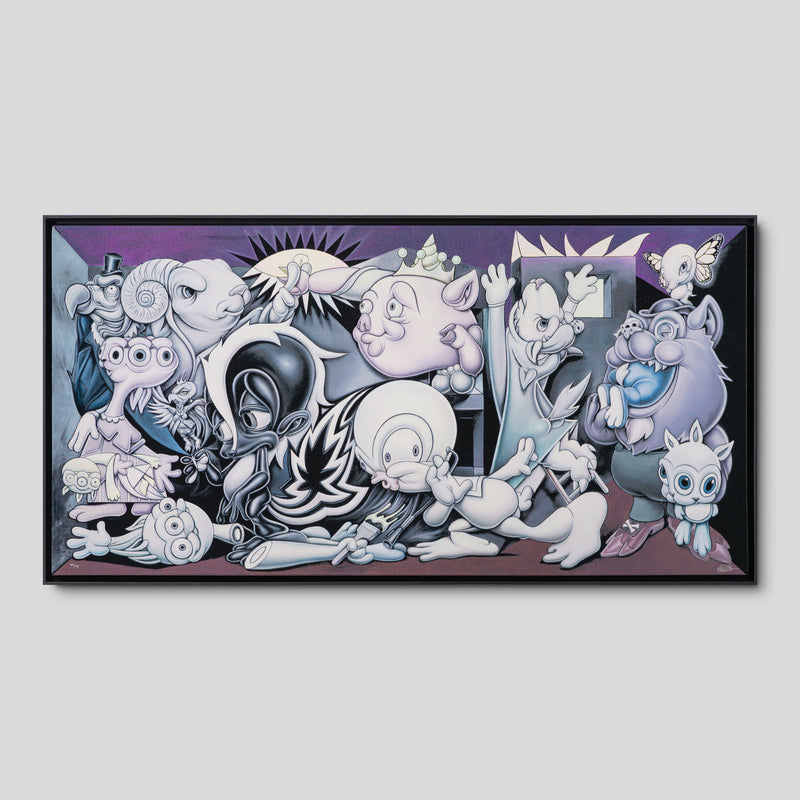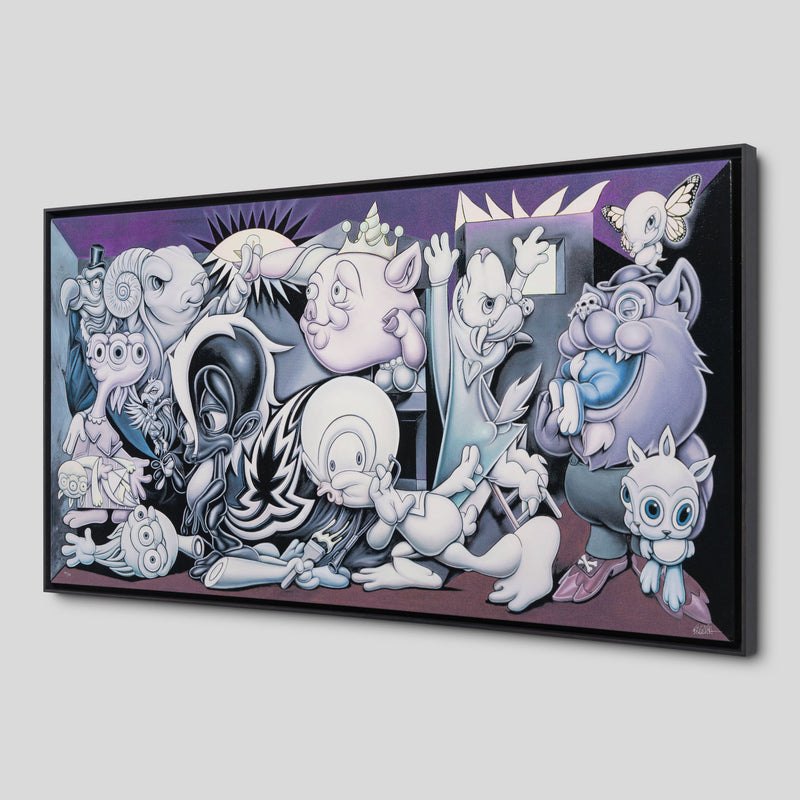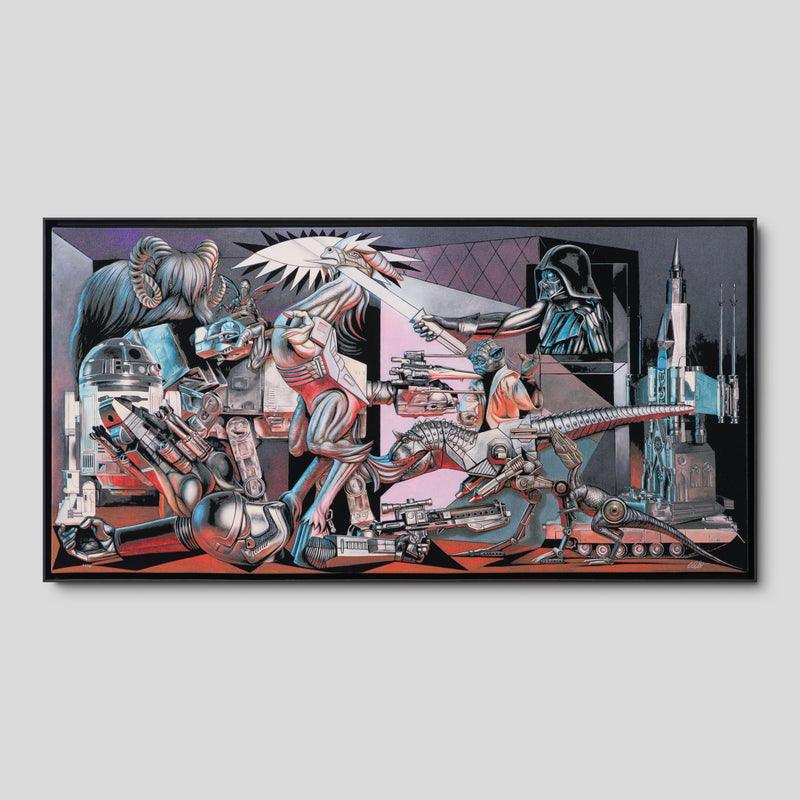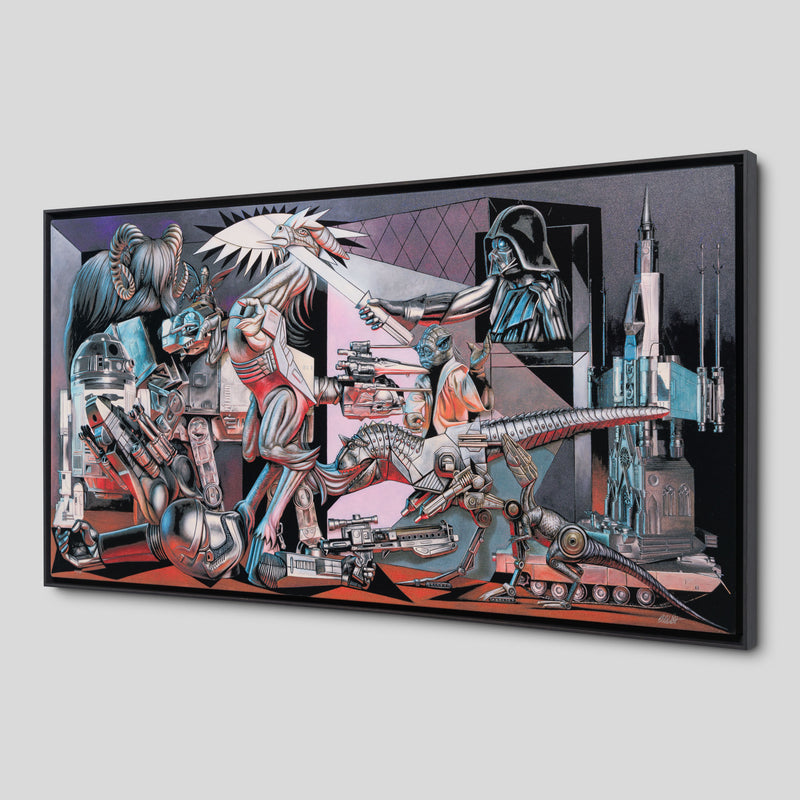Ron English began his career by studying Fine Art and Photography at the University of North Texas in Denton, before receiving an MFA from the University of Texas in Austin. During this early period, he took a particular interest in counter-cultural movements such as Surrealism and Dada, historical photographs, and the visual painted illusions of trompe l'oeil.
Beyond art school, in the late 1970s he 'started doing a lot of stuff on the streets'. Influenced by photography, he traced the shadows of his friends onto walls, using car headlights to cast silhouettes, which have since been adopted by the likes of Banksy. Leaving behind huge murals in numerous towns across the U.S., he earned himself the title, 'the godfather of street art'.
During his 20s, English also hijacked billboards to create illusions on enormous scale. Blending photography with text, he radically altered big brands' original messaging to play a 'kind of game' on his viewers' eyes. He was one of the first artists to employ this form of 'culture jamming' to critique consumerist society and the status quo with his own subversive statements.
While doing so, English experienced liberation in engaging the public with art and free speech: 'we would have way more audience than any gallery or museum, because we had freeways'. In 1985 English moved to New York, where he became an integral figure in the East Village street art scene, painting directly on walls alongside the likes of Kenny Scharf, Jean-Michel Basquiat and Keith Haring, who he recalls 'was a fan and had been following what I was doing already'. English also counts Haring as one of his own influences, as he developed a personal style to address larger issues. Collectively, English recalls how they 'just wanted a completely different art world', bring rebellion and freedom to what had formerly been a 'very restrictive place'.
Another inspiration for English was Andy Warhol, who he met in New York at this time. Breaking the didactic between high and low art, and employing the imagery of advertising and everyday culture, Warhol was the King of Pop Art. 'I wouldn't have the career I've had without Warhol. He paved the way', says English. Deciding to focus primarily on painting at this point, major New York gallery shows and commercial success followed for him.
During the 1980s and 90s, English moved beyond Warhol's Pop art to become an early forerunner of Pop Surrealism, in which artists distort recognisable symbols, characters and iconography in unexpected ways. Building on his earlier experimentations with 'culture jamming', English incorporated comic book characters into adverts to create more politically-motivated work.
Throughout the 2000s, English continued to parody famous cartoons, from Ronald Macdonald to Mickey Mouse, as well as creating his own characters, in sculptural form and paintings. His first was Mc Supersized, based on the hit film, 'Supersize Me', while more recently he has devised an entire world, Delusionville, which he has populated with three-headed rabbits, big bad wolves, and a Punk Skunk.
Telling his subversive stories through other media, English has written stories, poems and songs about Delusionville, in a drive to create 'alternative realities.' Working across art forms, this reflects his wider collaborations with the likes of Slash and The Dandy Warhols, for whom he has provided LP artwork.
